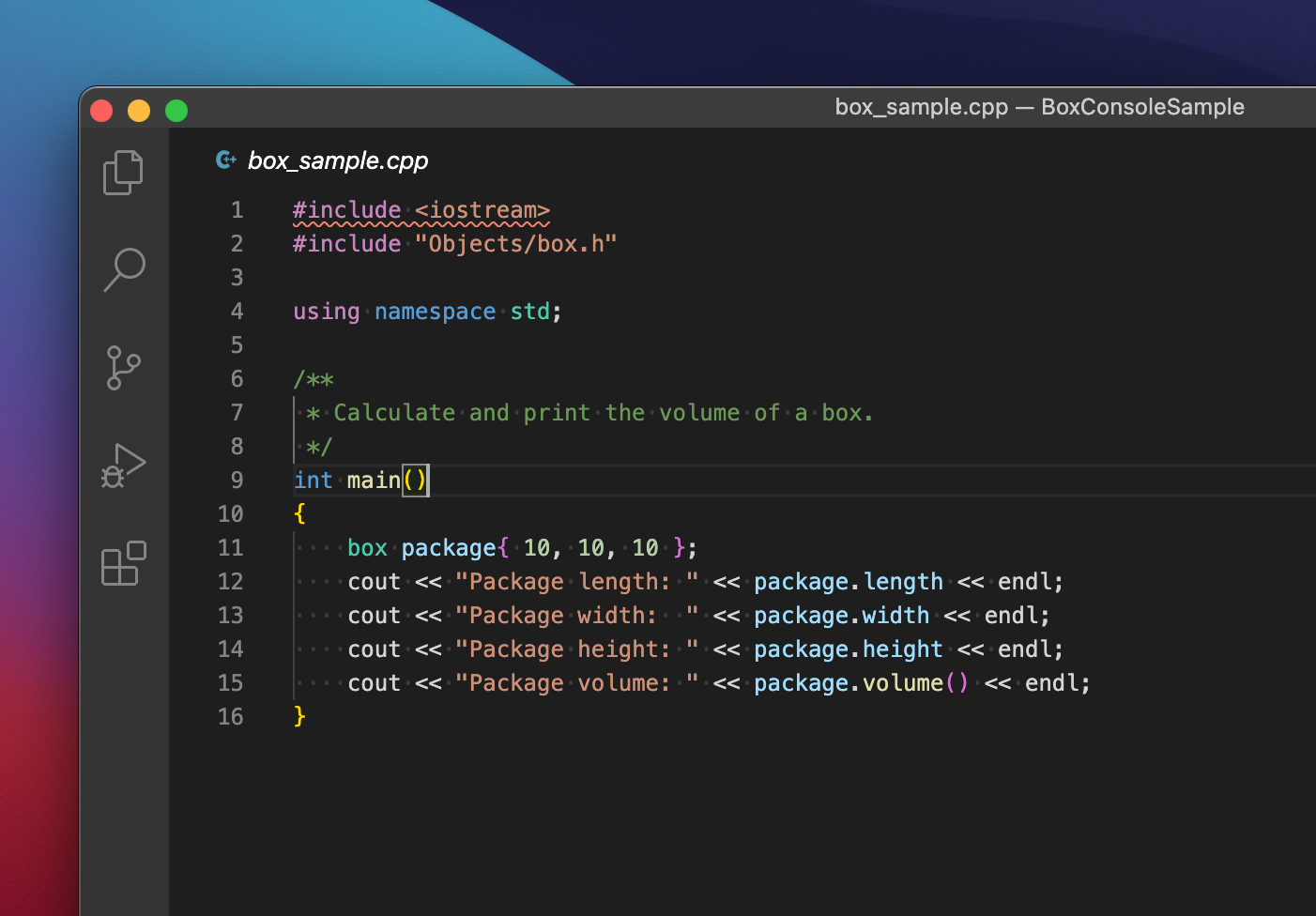


- #Comment the code in visual studio code for mac how to
- #Comment the code in visual studio code for mac install
Go with whatever makes you more comfortable, but if you have no preference, I would strongly recommend using TypeScript. I’ve been using TypeScript for the last several months, so I chose this rather than JavaScript. This will open the Yeoman interface and allow you to choose a few options for your extension.
#Comment the code in visual studio code for mac install
Run the following to install Yeoman and the VS Code extension generator and to create a “Hello World” extension in the current directory: npm install -g yo generator-code The VS Code team has kindly created an extension generator, which will create the necessary files and folders, including the Hello World extension source code, package.json, launch.json, and tasks.json for additional convenience.
#Comment the code in visual studio code for mac how to
However, I would like to take this opportunity to show you specifically how to create a Touch Bar extension for a MacBook. The “Hello World” example from Microsoft is quite good, so I would recommend reading it if you want a deeper explanation of each of the steps. Creating an extension is quite simple, if none that fit your needs are available in the marketplace. As a recent convert from Emacs, I appreciate the ability to customize my editor through the form of extensions. '/Applications/Visual Studio Code.Visual Studio Code is an excellent editor, with a ton of room for customization. Path turned out to be: /usr/local/bin/code -> A brew reinstall recreated it: brew cask reinstall visual-studio-code I foolishly deleted my /usr/local/bin/code symbolic link and did not know the correct path. Running “which code” command will give you a proof the code command working now: Shell command ‘code’ successfully installed in PATH. That will give you the following message: Shell Command: Install ‘code’ command in PATH command Type “Shell” and select the following option: Here are the steps which I followed to make it working on MAC: This work for me: sudo ln -fs "/Applications/Visual Studio Code.app/Contents/Resources/app/bin/code" /usr/local/bin/ Shell Command: Install 'code' command in PATH command.ĭon’t forget to restart your terminal to have the new PATH included. Open the Command Palette (⇧⌘P) Shell Command: Uninstall 'code' command in PATH command. I simply uninstalled it first, then installed it again. It was quite simple to follow the documentation to install ‘code’ to PATH but didn’t work. Then in terminal code index.html (or whatever) will open that file in VS Code. 2:Īdd this to your ~/.bash_profile, or to ~/.zshrc if you are running MacOS Catalina or later.Įxport PATH="$PATH:/Applications/Visual Studio Code.app/Contents/Resources/app/bin"Įnter the following by pressing i to insert: code () " NOTE: If you’re running a build based off the OSS repository… You will need to run code-oss. ’ in anyįolder to start editing files in that folder. Open the Command Palette via (⇧⌘P) and type shell command to find the Shell Command: > Install ‘code’ command in PATH** command.Īfter executing the command, restart the terminal for the new $PATH Otherwise (as noted in the comments) you’ll have to go through this process again after reboot 2. Make sure you drag Visual Studio Code app into the -Applications- folder ĮDIT: I ended up opening it from within Visual Code Studio by changing the workspace but I am wondering why that command “code. Monas-MacBook-Pro:myExpressApp mona$ code. How can I call the Visual Studio Code in OSX terminal? Monas-MacBook-Pro:myExpressApp mona$ pwd ” doesn’t work in this manual?Īll the other steps before that worked.


 0 kommentar(er)
0 kommentar(er)
